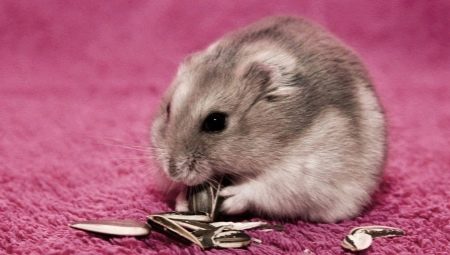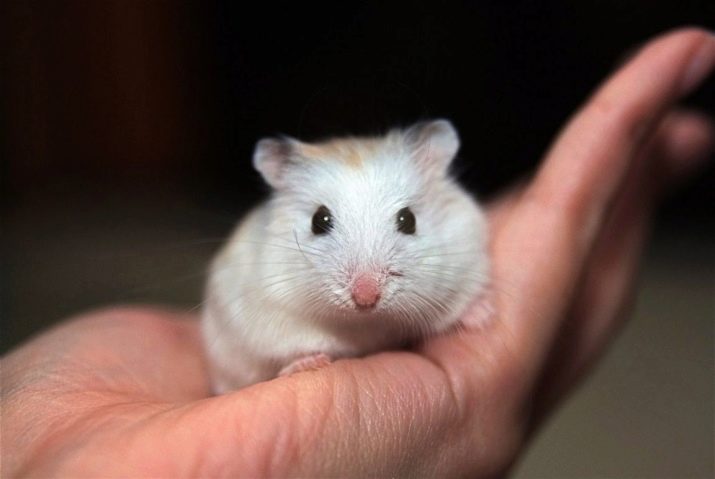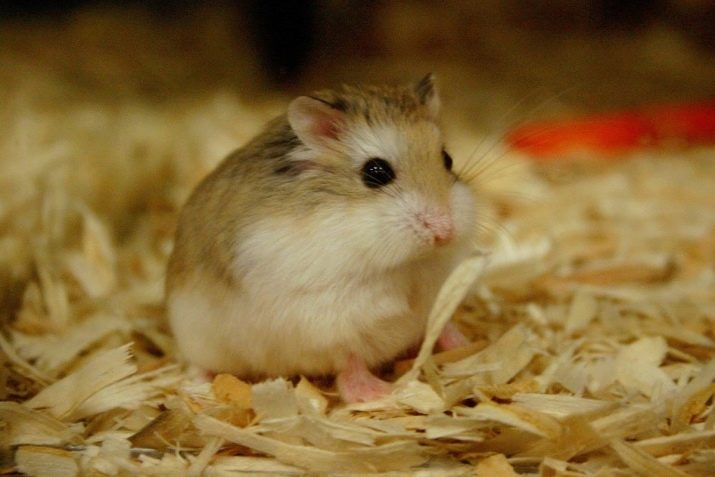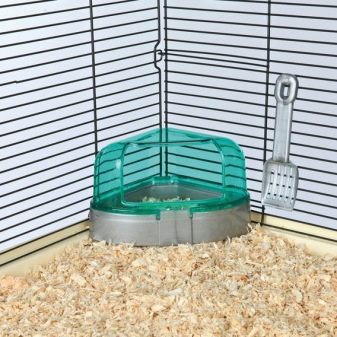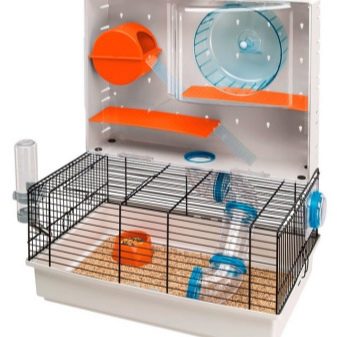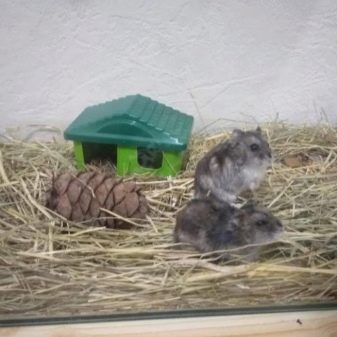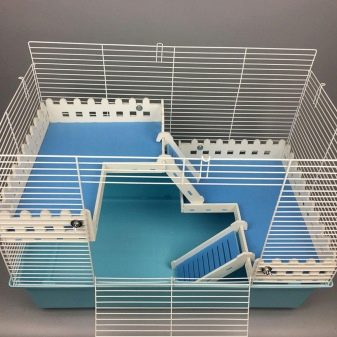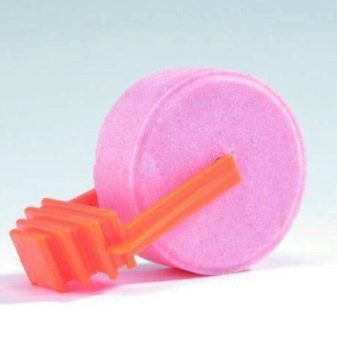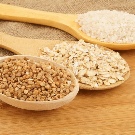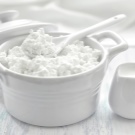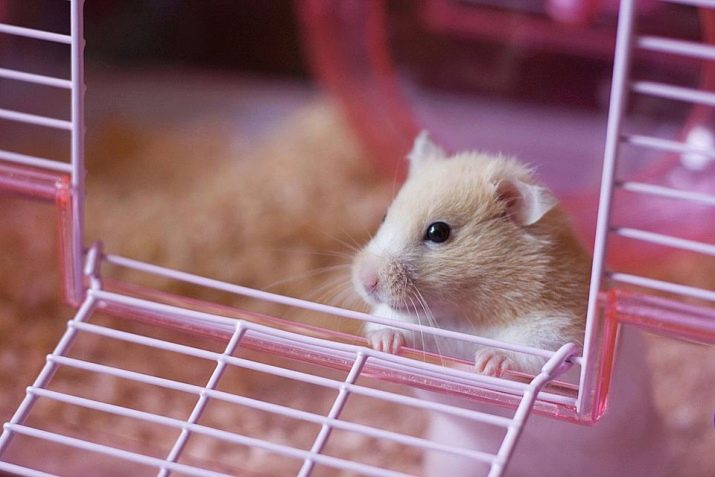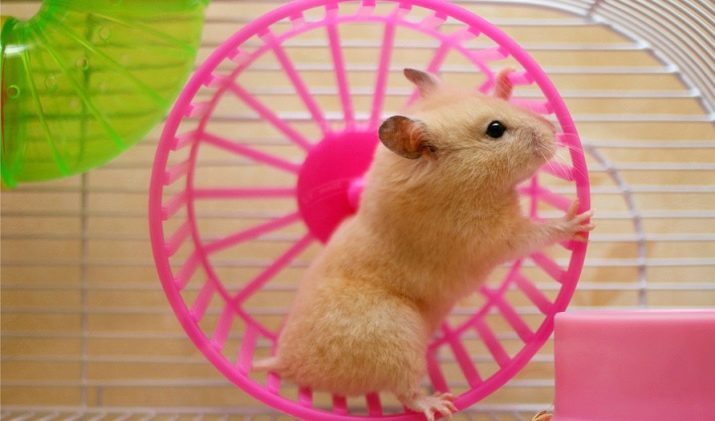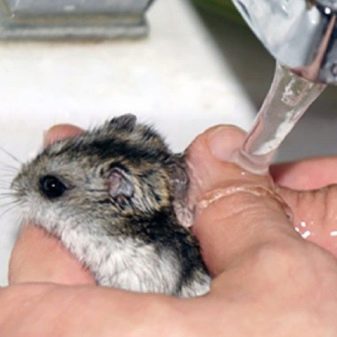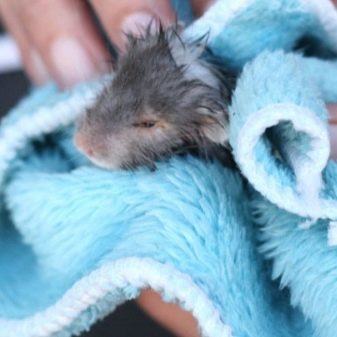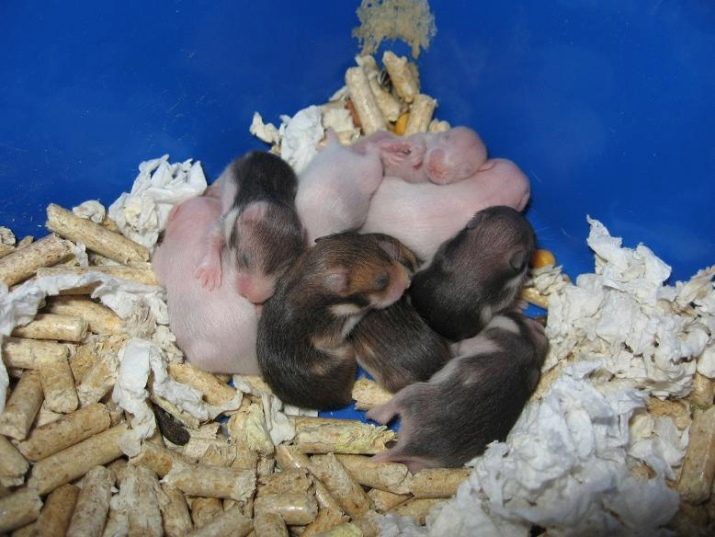Hamsters are among the most popular pets and have conquered millions of human hearts. Their content does not cause difficulties even for beginners, however, you still need to know some of the nuances of care.
Pros and cons of the content
Hamsters are loved and adored all over the world, due to a number of their valuable qualities.
- Animals do not occupy much space in the apartment and are quite content with a small aquarium or cage.
- Rodents grow and develop beautifully alone and do not require the acquisition of a pair. The second individual can be made either on their own, or for breeding.
- Hamsters are fairly quiet animals and, unlike cats, dogs and birds, they produce virtually no noise.
- Animals are absolutely not vindictive and do not hold insults.
- Hamsters are able to breed in captivity and unpretentious in food.
- Rodents treat children well, which often turns out to be not very good consequences for themselves.
- Hamster is easy to care for at home.
- The cost of a rodent is much lower than the cost of pedigree puppies, kittens and other pets.
The disadvantages of hamsters include the need for regular cleaning of the cage, hibernation of many individuals and the likelihood of aggression towards people. However, the main disadvantage is the life expectancy of rodents.
Most of them live from 2.5 to 4 years, in connection with which their death can cause deep emotional trauma to the child and cause deep shock.
Basic needs
Before you start a hamster, you need to familiarize yourself with its main needs and make sure that they can be fully satisfied. The hamster needs include a cozy home, thermal comfort, cleanliness, lack of stress, entertainment, proper nutrition and proper care.
Dwelling
As can be seen from the rather impressive list of conditions necessary for a hamster, the content of this rodent is a matter of responsibility. Among the priorities facing the future owner, is the choice of a cozy and functional home. This moment is especially important because hamsters are prone to frequent stress, arising from them for the most trivial reasons. Therefore, the animal needs a reliable shelter and its own territory, where he would feel completely safe.
As a dwelling for the hamster, experts recommend choosing either special cages or bulk aquariums. However, the cell in this case is more preferable, as it allows to install inside the set of useful and necessary devices. In no case should the animals be kept in cardboard boxes, plastic containers and glass jars. The last two types of containers are suitable only as a temporary shelter animal, for example, during its transportation from the store to the house.
When buying a cell should pay attention to its size, which should not be less than 60 cm in length and 40 in width. The height of the construction does not play a special role, as long as the wheel fits inside and preferably a small house. Optimally, the rods will be located in the horizontal direction, which will allow the hamster to move freely in any plane of the dwelling. As a litter, you can use sawdust, hay and corn filler, However, many hamster owners prefer hay.
The fact is that hamsters love to “build their nests,” and using hay for this purpose is the most convenient.
In addition, if the owners want to leave the house for a couple of days, then the straw will also be a more suitable option, as it will allow the liquid to go down and will not let the smell out. Sawdust same instantly get wet, create discomfort hamster and begin to smell. In the absence of ready-made fillers in the extreme case, you can take toilet paper or old newspapers, but such materials require daily replacement with new ones, otherwise the unpleasant smell from the cage is provided. It is not suitable for bedding cotton and fabric, so their use should be excluded.
After selecting the filler proceed to complete the house. It must necessarily contain a drinking bowl, representing a small vessel with a dosing ball or an elongated tube through which the hamster will drink.
Two feeders are also needed, one of which will be intended for dry food (grains), and the second for fresh vegetables and fruits. Both the trough and both feeders must have fixtures by which they are hung on the cage walls.
Putting containers on the floor is not recommended: the hamster will quickly turn them over and trample down the contents.
Another necessary accessory for the cell is a mineral stone. It performs two functions at once - it allows the rodent to grind its teeth and saturates its body with useful substances. The place of the toilet in a cage is not indicated in any way: hamsters independently choose a certain angle, and later only go to it. However, when this place becomes too dirty, they move to another, clean corner, and hold their natural needs there.
You need to place the cage in a quiet place, away from radiators, drafts and direct ultraviolet rays. Also, do not put it in the zone of children's games and on the aisle, where the animal will not have any rest.
To expand the cage space, it is recommended to use ladders and tiers, on which young hamsters gladly climb and roll.
Nutrition
Feeding a hamster is quite an important event and determines the health and well-being of the pet. Below is a list of approved products for the rodent, many of which are sure to please him and become a favorite delicacy.
- Dry mix for hamsters, it is a composition made from wheat and barley grains, pressed grass pellets, sunflower seeds and dried corn, taken in different combinations. This food has a balanced composition and is designed to meet the needs and preferences of rodents. Dried pieces of various fruits can be added to the finished mixture, but they should be used in small quantities.
- Herbal ingredients in the form of fresh and boiled peas, clover leaves, vetch, alfalfa and bluegrass are also necessary for good nutrition of the hamster. Vegetables are recommended carrots, beets, zucchini, fresh cucumbers and tomatoes, beans, sweet peppers, cauliflower and a little pumpkin. From fruit, you can offer bananas, pears, apples and grapes, subject to the removal of stem and seed.
- Boiled rice, buckwheat, oatmeal and millet can be given 2-3 times in 7 days, the main thing in their preparation is not to use salt.
- Dried fruits in the form of banana chips can be given daily, while dried cherries, dried apricots and prunes are offered much less often and exclusively in the form of delicacy. This is due to the high content of sugar in them, which, like salt, is harmful enough to hamsters.
- Seeds and nuts can also be given daily. Most hamsters are very fond of walnuts, almonds, hazelnuts and pumpkin seeds.
- Dairy products can be given a little low-fat cottage cheese and occasionally a small slice of hard cheese. As a source of protein, especially for pregnant females, boiled egg white, boiled chicken, beef and lean pork will do. The main thing is that the meat is well cooked and not hard, as it is strictly prohibited to offer it to the hamsters in raw form.
- Flour products in the form of biscuits, dried and unsweetened cookies are allowed to give no more than once a week.
However, a rich ration of permitted food does not at all indicate the omnivorous hamsters. There is a fairly large list of foods that rodents can not eat. Below we briefly discuss the most harmful of them, the use of which can cause significant harm to the pet's health.
Spices are strictly contraindicated for hamsters.They, along with sour and spicy foods, can cause burns of the mucous membranes of the mouth, stomach and esophagus. In this regard, feeding the animal with kebabs, dishes with vinegar and too pepper food is prohibited.
Despite the fact that most fruits are well absorbed by the body of a hamster, the use of some of them is under strict prohibition. These include all citrus and kiwi fruits that are high in acid can irritate the rodent's digestive system.
Fatty dishes and sweets, including honey and sweets, should also not be given to a pet, this is especially true of the Dzungarian hamsters.. This is due to their tendency to diabetes, which practically does not occur among the Syrian counterparts.
Also, pets should not be given pickles, mushrooms, onions, garlic and white cabbage, as well as fruit bones and cones of coniferous trees.
Temperature
The room where the hamster is kept must be at least 20 degrees. Otherwise, the pet will become cold and sick. However, putting the cage next to heating devices is also not worth it. It is better to determine the dwelling in the depth of the room and to protect from the effects of drafts. If the cage is located on the windowsill, then at the time of airing it should also be removed to another place.
Calm
Hamster like no one else is exposed to stress and needs a calm atmosphere. The cage of another adult hamster is very much affected, regardless of whether it is a boy or a girl. Hamsters should be together either from an early age, or live in different cells. Another cause for concern is the bright light. Hamsters are well-versed in the dark and do not need additional lighting. Dirty bedding, as well as the lack of food and drink, can also cause severe stress.
In addition, the cage should not be constantly moved from one place to another, as well as talking loudly next to the pet, placing it near the TV and leaving the cellphone next to the cage - from a sudden ring of which the animal can get very scared. The females who have just had offspring, do not like it when the owner endlessly checks the babies. As a result, the mother begins to get angry and can bite.
Also, do not need to make a pet on the street and to admit to the cage of cats, dogs and young children. Cleaning a cage near a hamster in front of his eyes is also not recommended. It is better to deposit the pet in a temporary container and calmly wash the house.
Toys and attractions
Hamsters need fun, so it is advisable to complete the cage with a sprocket wheel, a slide and a ladder. You can purchase a walking ball in which the pet can walk around the house. If time and imagination allows, it is possible to construct a recreational park for the animal, having constructed obstacles and labyrinths in it. To do this, you can use tubes from under paper towels and toilet paper, plastic bottles and cardboard.
Water treatment
Hamsters do not like swimming very much and are very stressed out of it. By themselves, they are very clean, constantly wash their faces and legs. You can put in a cage tank with clean and dry sand, where the rodent will clean its fur coat. But you can wash your pet in water only if parasites appear or if it gets dirty in its feces. It is better to do this with a cotton pad dipped in clean water.
When fleas are detected, antiparasitic shampoo is used, gently foaming and applying it on the pet's fur coat, then washing it off under a thin stream of water. At the same time it is important to prevent water from entering the eyes and ears. After bathing hamster promakivayut dry towel and placed in a box, covered with a soft cloth. Drying the animal with a hair dryer is strictly prohibited.
The next point of care for a decorative animal is the processing of its claws. To do this, you only need to buy nail forceps and follow the instructions clearly. So, you only need to cut the free edge of the claw, trying not to catch the capillary. If on the surface of the claws there is dark pigmentation, then you can use a fluorescent lamp, translucent claw through.
In addition, during the procedure it is necessary to keep hydrogen peroxide and a bandage ready, and in case of accidental damage to the capillaries, immediately treat the wound and the area around it.
Diseases
With proper nutrition and proper care, hamsters are rarely sick, but no one is immune from a number of common diseases. The following are the most common diseases, as well as the reasons for their occurrence and treatment recommendations.
- Cystitis is a consequence of urinary tract infection and manifests itself in frequent urination with blood. As treatment, chloramphenicol injections are given at the rate of 5 mg per 100 g of weight twice a day.
- Enteritis also has an infectious nature and in 20% of cases ends in death. Its first signs are watery diarrhea. Neomycin and tetracycline antibiotics are prescribed as treatment.
- Scabies caused by scabies mites, which lay eggs in the upper layer of the skin. The parasite feeds on skin dandruff and annoys the animals too much. Scabies can be ear, head and general and can be treated with a 3% solution of SK-9 and sulfuric ointment. You can also use a 1% solution of chlorophos in combination with a 1% solution of D-33. Re-processing is performed after a week.
- Prolapse of the rectum comes from diarrhea or constipation. With timely treatment to the veterinarian is easily treated without amputation.
- Rickets occurs due to the lack of vitamin D in the diet and more often happens in young hamsters in winter.
As a treatment, pets are moved to a bright place and 2 drops of “Trivita” are drunk daily for two weeks.
Rules for the care of newborn hamsters
Care for newly born hamsters is to create the most favorable conditions for kids and their mothers. So, Newborn babies should never be touched, and this applies not only to pets of dwarf breeds, but also to all rodents, without exception. Otherwise, the mother, smelling someone else's smell, at best, will stop feeding the hamsters, and at worst, she will bite and eat them. The most correct option would be to leave the family alone for several days and only constantly monitor the availability of food and water for the mother.
After 5-7 days after birth, the mother and children are transplanted into a box and the cage is cleaned, replacing the litter and carefully washing the objects there. In the future, it is recommended to be held once every two days. As soon as the babies become covered with wool, they begin to introduce complementary foods. To do this, put a couple of cabbage leaves in a cage, and when they reach one month of age - chopped boiled chicken. One and a half months after the birth, the female is sent to the male, and the babies are seated in different cages or sent to a new place of residence in another family.
How to care for a hamster, see the following video.
